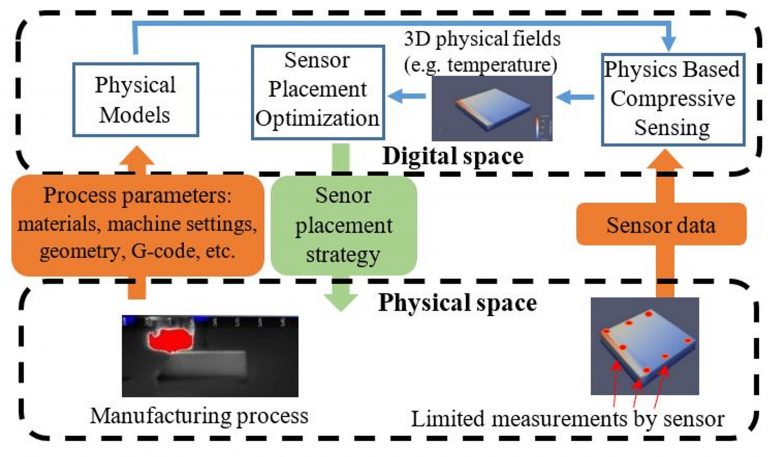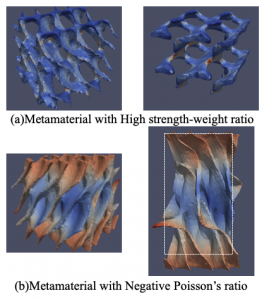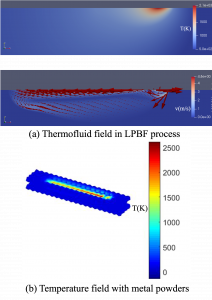PROCESS MONITORING AND CONTROL IN ADDITIVE MANUFACTURING
Additive manufacturing (AM) offers substantial design freedom for parts with complex geometries such as intricate internal features and lattice structures. The major challenge for LPBF however is the variability of build qualities. Because of limitations in sensor accessibility, temporal and spatial resolution, installation space, and life-cycle cost for conventional sensors, there is a need to develop novel sensing techniques to monitor AM processes more efficiently. Data collected from sensors also need to be processed smartly. This research focuses on the development of physics-informed data-driven approaches to explore physical correlations between data. The developed methods integrating physical models and data-driven methods also enable digital twins in monitoring AM processes. By analyzing information exchanged between digital and physical spaces, the decision-making process can be more efficient and accurate. The machine settings can also be adjusted accordingly to improve build qualities.
MULTIPHYSICS MODELING AND DESIGN OPTIMIZATION
Computational modeling techniques play important roles in design. The associations between design parameters and product behaviors can be analyzed with the developed models. For different products in different systems, multiphysics models are built to describe physical phenomenons, which include but not limited to fluid dynamics, heat transfer, solid mechanics, and chemical reaction. In this research, the multiphysics models are implemented by an open-source Python-based software package, so that the developed models can be easily integrated with other optimization techniques for innovative design. The developed techniques are used to design metamaterials with novel material properties, optimize process parameters in manufacturing, and predict future machine states.
HUMAN HEALTH MONITORING AND BIOMANUFACTURING
It is challenging to diagnose and prognose human health conditions because of limitations in data acquisition techniques and sensor accessibility. For instance, biomechanics such as aortic stiffness and wall stresses play important roles in identifying abnormalities of thoracic aorta. However, these quantities cannot be directly obtained from imaging techniques such as computed tomography and magnetic resonance imaging. In this research, physics-informed data-driven approaches will be developed to predict unmeasurable quantities based on measured data. For instance, the aortic stiffness and wall stresses are predicted based on the aortic geometry obtained from medical images. The associations between the physical quantities and aortic health conditions can be further assessed. For biomanufacturing, techniques to optimize structures of scaffolds and improve bioprinting processes will be developed. The optimization technique integrated with multiphysics models will be used to design scaffolds with desired material properties. The process monitoring and control technique will be developed to minimize defects such as non-homogeneous strands, strand fusion, strand collapse, and others in the extrusion-based bioprinting process.





